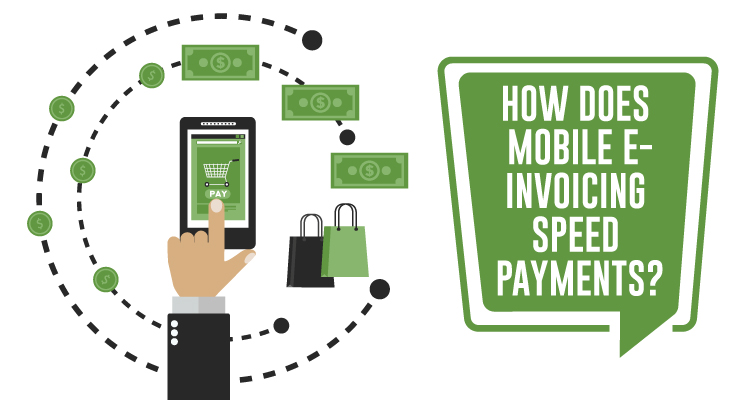For hundreds of years, there wasn’t much innovation when it came to invoicing. A business owner would write-down the services provided or goods purchased, mail the bill to the client, and then patiently wait for a check.
It was an antiquated, tedious, and slow process that could cause your cash flow to come to a screeching halt. Thankfully, in the early 2000s, that changed with the advent of electronic invoicing and billing.
With electronic invoicing, you could create invoices on your computer and then send them electronically via email. Originally, you would still have to create an invoice using a spreadsheet, but as it became more commonplace, more and more companies began offering invoicing templates and recurring payment options. Ultimately, this saved you time, money, and increased cash flow into your business.
Interestingly, despite these benefits, the Federal Reserve Bank of Minneapolis (FRB) estimates, that only a mere 25 percent of the 25 billion invoices generated annually in the US are exchanged electronically. However, as the mobile revolution continues to unfold, we anticipate that this trend will change.
Take into consideration the fact that mobile payments are expected to grow at a 23.2 percent compound annual growth rate (CAGR) through 2020.
Combine that mobile payment stat with the benefits of e-invoicing, and it’s easy to understand when mobile e-invoicing will become the next big thing in the billing industry.

Table of Contents
ToggleWhat is Mobile Invoicing and Why Are They Awesome?
Let’s quickly go overview what exactly mobile payments, and why we love them,
In a nutshell, mobile invoicing allows you to send bills and manage invoice directly from your mobile device through. As Angela Ruth explains in ‘Trends in E-invoicing,’ “We expect to have access to invoices so that they can be reviewed, sent, and approved – regardless of where we are currently located in the world.”
“Having this 24/7 access will become a major consideration for people when selecting invoicing software,” continues Ruth. “If the company is not mobile friendly, like featuring an app, customers may move on to a company that does offer such a feature.”
Even countries are backing mobile invoice. In Chile, tax authorities are developing an app “that gives businesses the opportunity to submit tax documents via their smartphones.
The main reason that people are falling in love with mobile invoices is that they’re convenient. In fact, according to research by Manta, 80% of business owners spend at least once a day on a mobile device for business.
But, another perk is that mobile e-invoicing speeds up payments. Of course, this is a big deal for business owners since it increases cash flow. And, when you have a positive cash you, you can stay ahead of your expenses and start putting more money into your business, savings, or retirement.
But, how exactly does mobile e-invoicing speed-up payments?
How Mobile E-Invoicing Speeds-Up Payments
Ability to create invoices anywhere and anytime.
Let’s start with the obvious. With mobile invoicing, you can create an invoice whenever and wherever you are. That means that while waiting to catch a flight, you can send and manage your invoices instead of waiting to get to your hotel, or even worse when you return home. Remember, the sooner you get an invoice out, the sooner you’ll get paid.
Funds are quickly available.
Can you believe that there was a time when it would take around a week for a payment to clear? Thankfully, that’s not the case anymore.
Most mobile invoicing platforms have funds available in your bank almost immediately or at least under two business days. However, as the blockchain and digital wallets become more embraced by users, funds could be in your account instantly since they’re eliminating the middlemen that slow down the payment process.
Flexible payment options.
In the past, you could only accept a check or a credit card. However, technology has made it possible for you to accept credit and debit cards, ACH, and even bitcoin. When your clients have more options to pay you, the faster they’ll pay your bill.
Send reminders.
Let’s say that you’re walking out the door for a business trip and you forgot about a couple of unpaid invoices. Instead of having that hover over your head for the next couple of days, you can send out a reminder with a ‘Pay Now’ while waiting for your Uber ride to pick you up.
Better yet, you can set-up automated reminders so that the invoicing platform will remind clients when invoice due date is approaching invoice or is past due.
Automate payments.
Speaking of automation, if you have a subscription-based business or long-term clients, then you should consider automating your payments. This means that instead of manually generating invoices, the customer is billed the same amount each month. This means that you’ll spend less time creating and managing invoices and more time making money.
















